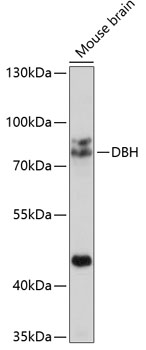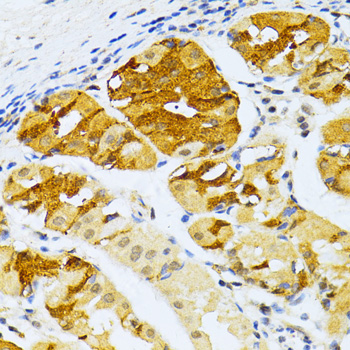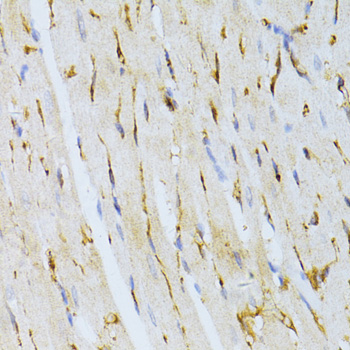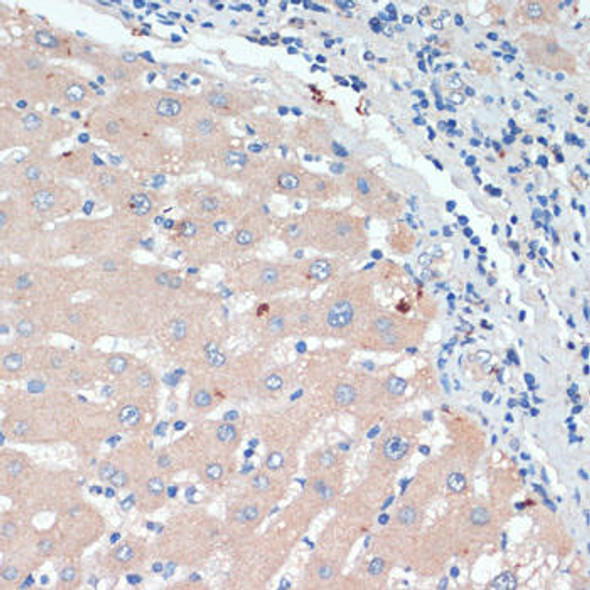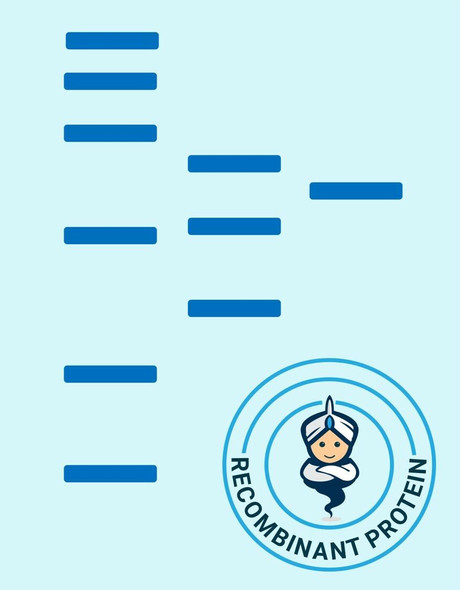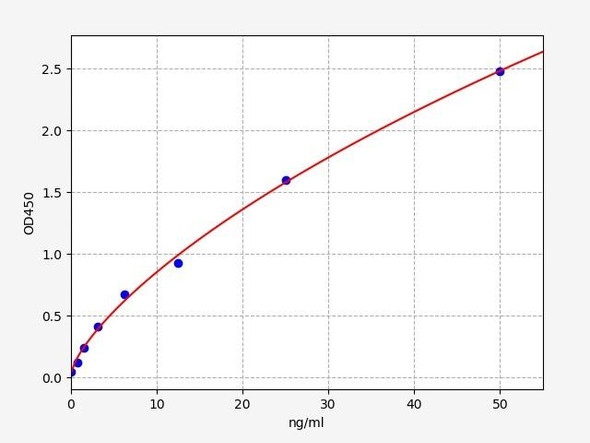Metabolism Antibodies 2
Anti-DBH Antibody (CAB2711)
- SKU:
- CAB2711
- Product Type:
- Antibody
- Reactivity:
- Human
- Reactivity:
- Mouse
- Reactivity:
- Rat
- Host Species:
- Rabbit
- Isotype:
- IgG
- Research Area:
- Metabolism
Description
| Antibody Name: | Anti-DBH Antibody |
| Antibody SKU: | CAB2711 |
| Antibody Size: | 20uL, 50uL, 100uL |
| Application: | WB IHC |
| Reactivity: | Human, Mouse, Rat |
| Host Species: | Rabbit |
| Immunogen: | A synthetic peptide corresponding to a sequence within amino acids 150-250 of human DBH (NP_000778.3). |
| Application: | WB IHC |
| Recommended Dilution: | WB 1:500 - 1:1000 IHC 1:50 - 1:100 |
| Reactivity: | Human, Mouse, Rat |
| Positive Samples: | Mouse brain |
| Immunogen: | A synthetic peptide corresponding to a sequence within amino acids 150-250 of human DBH (NP_000778.3). |
| Purification Method: | Affinity purification |
| Storage Buffer: | Store at -20'C. Avoid freeze / thaw cycles. Buffer: PBS with 0.02% sodium azide, 50% glycerol, pH7.3. |
| Isotype: | IgG |
| Sequence: | PFGT CDPK DYLI EDGT VHLV YGIL EEPF RSLE AING SGLQ MGLQ RVQL LKPN IPEP ELPS DACT MEVQ APNI QIPS QETT YWCY IKEL PKGF SRHH IIKY E |
| Gene ID: | 1621 |
| Uniprot: | P09172 |
| Cellular Location: | Cytoplasmic vesicle, Single-pass type II membrane protein, chromaffin granule lumen, chromaffin granule membrane, secretory vesicle, secretory vesicle lumen, secretory vesicle membrane |
| Calculated MW: | 69kDa |
| Observed MW: | 79kDa |
| Synonyms: | DBH, DBM |
| Background: | The protein encoded by this gene is an oxidoreductase belonging to the copper type II, ascorbate-dependent monooxygenase family. It is present in the synaptic vesicles of postganglionic sympathetic neurons and converts dopamine to norepinephrine. It exists in both soluble and membrane-bound forms, depending on the absence or presence, respectively, of a signal peptide. |
| UniProt Protein Function: | DBH: Conversion of dopamine to noradrenaline. Homotetramer composed of two non-covalently bound disulfide-linked dimers. Activity is enhanced by nerve growth factor (in superior cervical ganglia and adrenal medulla). Trans-synaptic stimulation with reserpine, acetylcholine and glucocorticoids. Belongs to the copper type II ascorbate-dependent monooxygenase family. |
| UniProt Protein Details: | Protein type:Membrane protein, integral; Motility/polarity/chemotaxis; EC 1.14.17.1; Oxidoreductase; Apoptosis; Amino Acid Metabolism - tyrosine; Cell cycle regulation Chromosomal Location of Human Ortholog: 9q34 Cellular Component: membrane; cytoplasm; integral to membrane; extracellular region Molecular Function:copper ion binding; L-ascorbic acid binding; dopamine beta-monooxygenase activity; catalytic activity Biological Process: fear response; dopamine catabolic process; maternal behavior; response to amphetamine; cytokine production; locomotory behavior; response to pain; behavioral response to ethanol; leukocyte mediated immunity; glucose homeostasis; memory; regulation of cell proliferation; norepinephrine biosynthetic process; synaptic transmission; catecholamine biosynthetic process; homoiothermy; positive regulation of vasoconstriction; visual learning; blood vessel remodeling; leukocyte migration Disease: Dopamine Beta-hydroxylase Deficiency, Congenital |
| NCBI Summary: | The protein encoded by this gene is an oxidoreductase belonging to the copper type II, ascorbate-dependent monooxygenase family. The encoded protein, expressed in neuroscretory vesicles and chromaffin granules of the adrenal medulla, catalyzes the conversion of dopamine to norepinephrine, which functions as both a hormone and as the main neurotransmitter of the sympathetic nervous system. The enzyme encoded by this gene exists exists in both soluble and membrane-bound forms, depending on the absence or presence, respectively, of a signal peptide. Mutations in this gene cause dopamine beta-hydroxylate deficiency in human patients, characterized by deficits in autonomic and cardiovascular function, including hypotension and ptosis. Polymorphisms in this gene may play a role in a variety of psychiatric disorders. [provided by RefSeq, Aug 2017] |
| UniProt Code: | P09172 |
| NCBI GenInfo Identifier: | 158517849 |
| NCBI Gene ID: | 1621 |
| NCBI Accession: | P09172.3 |
| UniProt Related Accession: | P09172 |
| Molecular Weight: | |
| NCBI Full Name: | Dopamine beta-hydroxylase |
| NCBI Synonym Full Names: | dopamine beta-hydroxylase |
| NCBI Official Symbol: | DBH |
| NCBI Official Synonym Symbols: | DBM; ORTHYP1 |
| NCBI Protein Information: | dopamine beta-hydroxylase |
| UniProt Protein Name: | Dopamine beta-hydroxylase |
| UniProt Synonym Protein Names: | Dopamine beta-monooxygenaseSoluble dopamine beta-hydroxylase |
| Protein Family: | Dopamine beta-hydroxylase |
| UniProt Gene Name: | DBH |
| UniProt Entry Name: | DOPO_HUMAN |


